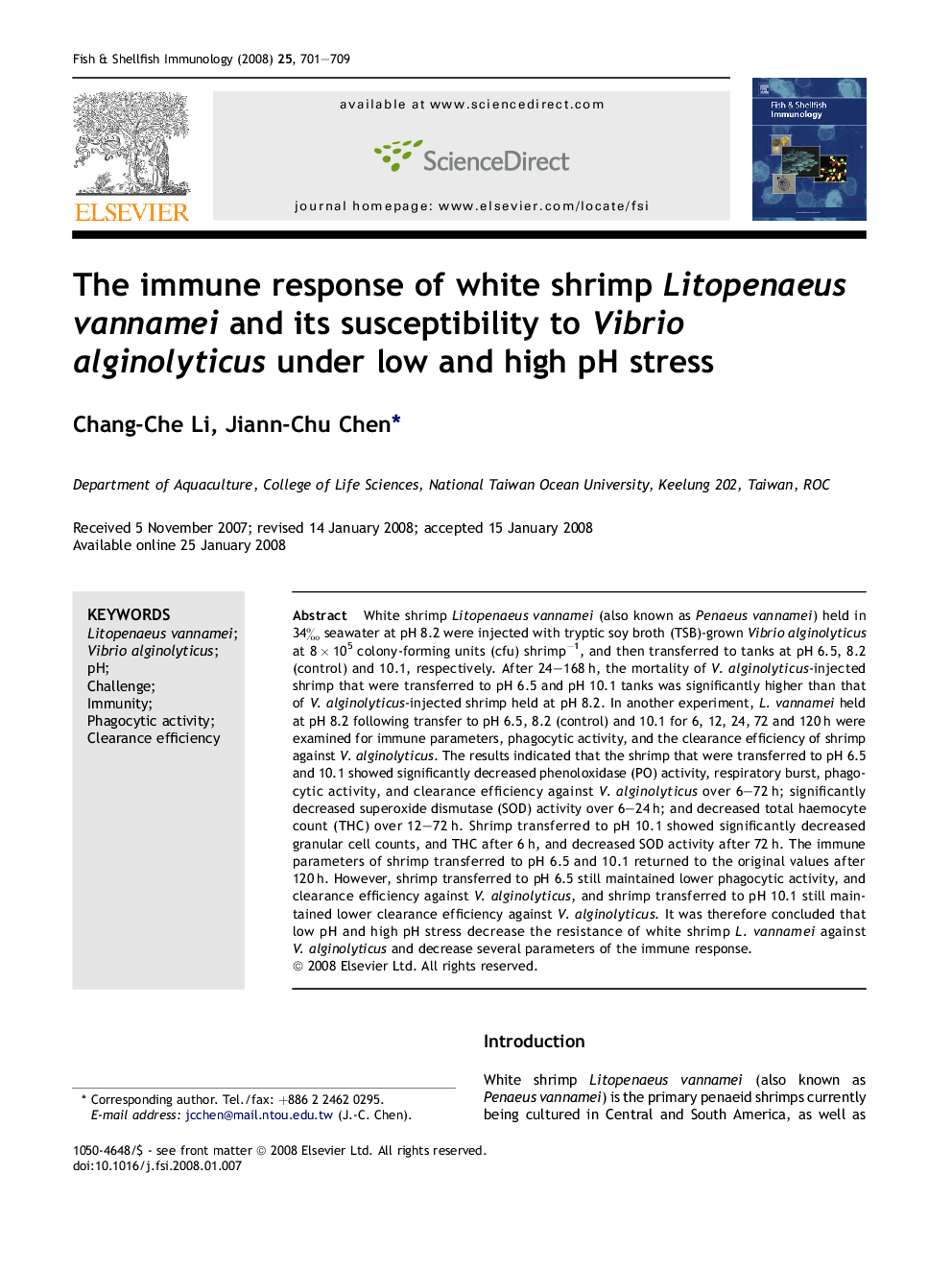| Article ID | Journal | Published Year | Pages | File Type |
|---|---|---|---|---|
| 2433345 | Fish & Shellfish Immunology | 2008 | 9 Pages |
White shrimp Litopenaeus vannamei (also known as Penaeus vannamei) held in 34‰ seawater at pH 8.2 were injected with tryptic soy broth (TSB)-grown Vibrio alginolyticus at 8 × 105 colony-forming units (cfu) shrimp−1, and then transferred to tanks at pH 6.5, 8.2 (control) and 10.1, respectively. After 24–168 h, the mortality of V. alginolyticus-injected shrimp that were transferred to pH 6.5 and pH 10.1 tanks was significantly higher than that of V. alginolyticus-injected shrimp held at pH 8.2. In another experiment, L. vannamei held at pH 8.2 following transfer to pH 6.5, 8.2 (control) and 10.1 for 6, 12, 24, 72 and 120 h were examined for immune parameters, phagocytic activity, and the clearance efficiency of shrimp against V. alginolyticus. The results indicated that the shrimp that were transferred to pH 6.5 and 10.1 showed significantly decreased phenoloxidase (PO) activity, respiratory burst, phagocytic activity, and clearance efficiency against V. alginolyticus over 6–72 h; significantly decreased superoxide dismutase (SOD) activity over 6–24 h; and decreased total haemocyte count (THC) over 12–72 h. Shrimp transferred to pH 10.1 showed significantly decreased granular cell counts, and THC after 6 h, and decreased SOD activity after 72 h. The immune parameters of shrimp transferred to pH 6.5 and 10.1 returned to the original values after 120 h. However, shrimp transferred to pH 6.5 still maintained lower phagocytic activity, and clearance efficiency against V. alginolyticus, and shrimp transferred to pH 10.1 still maintained lower clearance efficiency against V. alginolyticus. It was therefore concluded that low pH and high pH stress decrease the resistance of white shrimp L. vannamei against V. alginolyticus and decrease several parameters of the immune response.
